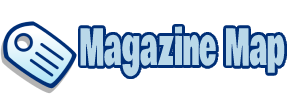How Employee Scheduling Apps Boost Productivity: A Comprehensive Review

Employee scheduling apps have revolutionized the way businesses manage their workforce, significantly enhancing productivity across various industries. These apps offer a multitude of benefits that streamline scheduling processes, optimize workforce management, and improve overall operational efficiency.
Benefits of Employee Scheduling Apps:
- Automated Scheduling: Traditional scheduling methods often involve manual entry and adjustments, consuming valuable time and resources. employee scheduling apps automate this process, allowing managers to create, edit, and distribute schedules efficiently.
- Time Savings: By automating scheduling tasks, managers can save considerable time that would otherwise be spent on manual scheduling. This time can be redirected towards more strategic activities such as employee development and customer service.
- Enhanced Accuracy: Human errors in scheduling can lead to missed shifts, understaffing, or overstaffing, which impact productivity and employee satisfaction. Scheduling apps reduce these errors by applying predefined rules and notifying managers of any conflicts.
- Improved Communication: Many scheduling apps include communication features that allow managers to easily notify employees of shift changes, updates, or important announcements. This improves transparency and reduces misunderstandings.
- Employee Empowerment: Some apps offer employees the ability to view their schedules, request shift changes, and communicate availability preferences directly. This empowers employees and enhances their engagement in the scheduling process.
- Data-Driven Insights: Modern scheduling apps often include analytics capabilities that provide managers with insights into labor costs, staffing trends, and employee attendance patterns. These insights enable data-driven decision-making and optimization of workforce planning.
- Flexibility and Adaptability: In industries with fluctuating demand or seasonal variations, scheduling apps enable quick adjustments to staffing levels based on real-time data and trends. This flexibility ensures optimal resource utilization.
- Compliance and Accountability: Scheduling apps can help ensure compliance with labor laws and regulations by tracking hours worked, breaks taken, and overtime. This promotes fairness and accountability in workforce management practices.
Case Studies and Examples:
- Retail: Retailers use scheduling apps to align staffing with peak shopping hours, reducing wait times and improving customer service.
- Healthcare: Hospitals and clinics utilize scheduling apps to manage complex shift rotations, ensuring adequate coverage and minimizing scheduling conflicts.
- Hospitality: Hotels and restaurants benefit from scheduling apps by adjusting staff levels based on reservations and events, optimizing labor costs without compromising service quality.
Conclusion:
Employee scheduling apps have become indispensable tools for businesses seeking to enhance productivity and operational efficiency. By automating employee scheduling apps processes, improving communication, and providing actionable insights, these apps empower managers to make informed decisions and create a more engaged and productive workforce. As technology continues to evolve, employee scheduling apps will likely play an even more crucial role in workforce management strategies across industries.





